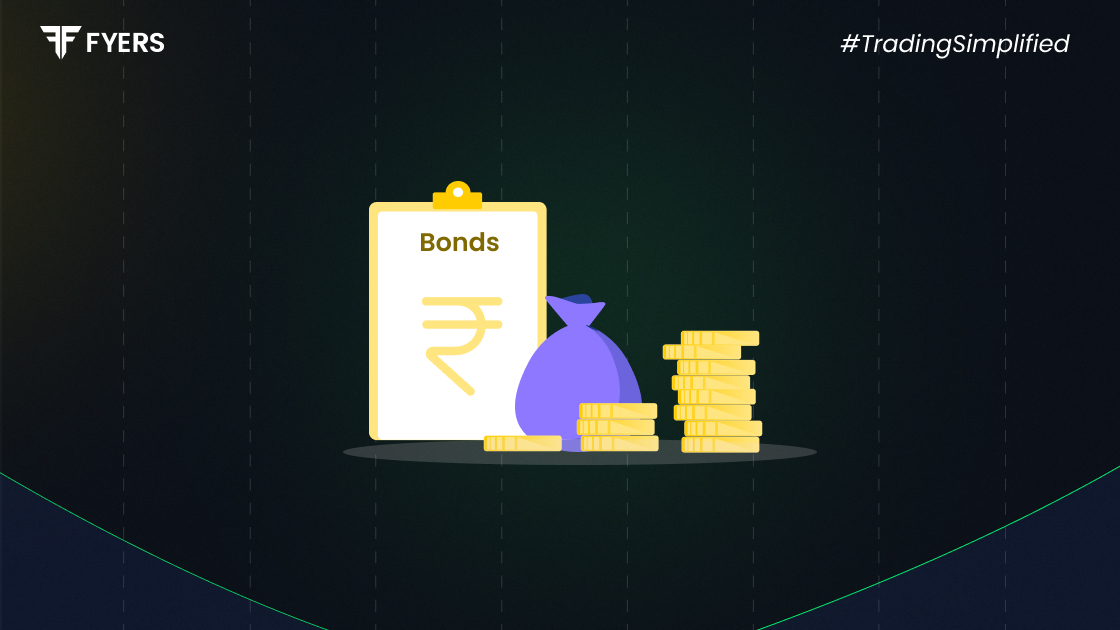

 17 Jun, 2025
17 Jun, 2025
 2 mins read
2 mins read

Bonds are among the most popular fixed-income instruments for investors seeking stable returns and lower risk compared to equities. They play a critical role in personal portfolios, corporate financing, and government borrowing. In this blog, we’ll explore what bonds are, the various types available, and their key features.
A bond is a debt instrument through which an entity - such as a government, corporation, or municipality - borrows money from investors for a specific period and agrees to repay it with interest.
When you buy a bond, you’re essentially lending money to the issuer. In return, the issuer promises to pay periodic interest (coupon payments) and return the principal amount on the maturity date.
There are several types of bonds, each serving different purposes and investor profiles. They can be broadly classified based on:
Issuer (Government, corporate)
Interest payout (Fixed, floating, zero-coupon)
Security (Secured, unsecured)
Convertibility (Convertible, non-convertible)
Tenure and taxation
Let’s take a closer look at the different types.
|
Bond Type |
Description |
|---|---|
|
Government Bonds |
Issued by central or state governments; considered low-risk (e.g., G-Secs, T-Bills) |
|
Corporate Bonds |
Issued by companies to raise capital; higher returns but carry more risk |
|
Municipal Bonds |
Issued by local government bodies for infrastructure projects |
|
Fixed Rate Bonds |
Offer a constant interest rate throughout the tenure |
|
Floating Rate Bonds |
Interest rates vary periodically based on market conditions |
|
Zero-Coupon Bonds |
Sold at a discount; no periodic interest but full value paid at maturity |
|
Convertible Bonds |
Can be converted into equity shares of the issuing company |
|
Non-Convertible Bonds |
Cannot be converted into equity; offer higher interest to compensate |
|
Tax-Free Bonds |
Interest income is exempt from tax (typically issued by government entities) |
|
Inflation-Indexed Bonds |
Returns are linked to inflation rates to preserve purchasing power |
|
Perpetual Bonds |
No fixed maturity date; pays interest indefinitely |
Understanding bond features helps assess risk and return:
Coupon Rate: The interest paid on the bond, usually annually or semi-annually.
Maturity: The date when the bond issuer repays the principal to the investor.
Face Value: The amount the bondholder receives on maturity.
Credit Rating: Indicates the creditworthiness of the issuer.
Yield: The actual return earned on the bond, which can differ from the coupon rate based on market price.
Liquidity: Ease of buying or selling the bond in the market.
Bonds are essential financial instruments offering steady income, capital preservation, and diversification for investors. Whether you're a risk-averse investor looking for safety or seeking better post-tax returns, there’s likely a bond type that fits your profile.
Before investing, always assess the issuer's credibility, the tenure, and the tax implications. Diversifying across different types of bonds can help balance your portfolio effectively.
Government bonds, especially those issued by the central government (like G-Secs or Treasury Bills), are considered the safest due to sovereign backing and low default risk.
Corporate bonds are issued by companies and offer higher returns but come with higher credit risk.
Government bonds are issued by the central or state governments and are safer but generally offer lower yields.
Calculate your Net P&L after deducting all the charges like Tax, Brokerage, etc.
Find your required margin.
Calculate the average price you paid for a stock and determine your total cost.
Estimate your investment growth. Calculate potential returns on one-time investments.
Forecast your investment returns. Understand potential growth with regular contributions.